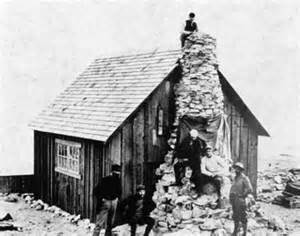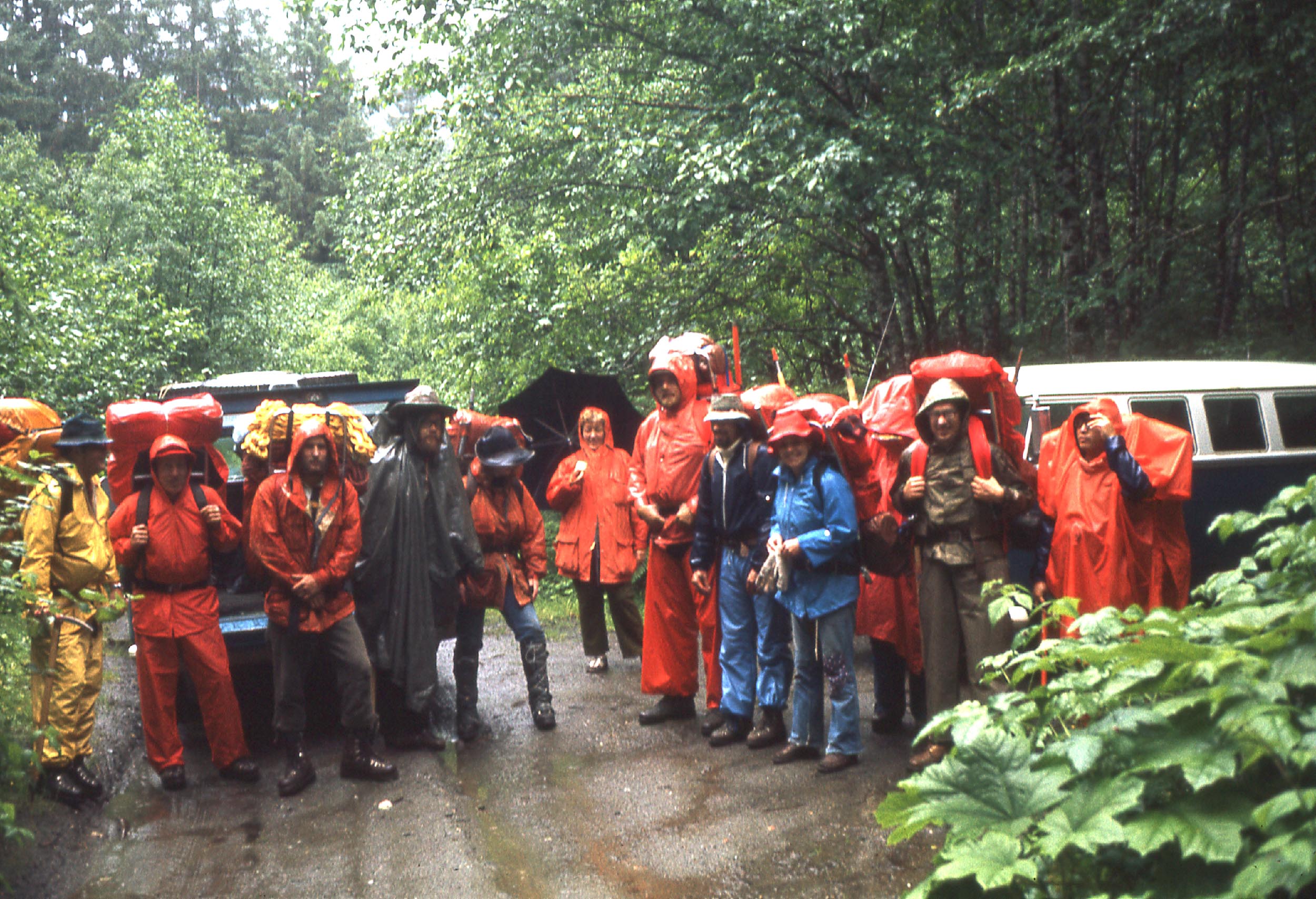By Susannah Cooley, Davidson College
The Ecology research group woke early on a windy and overcast morning to begin our 13-mile trip to Avalanche Canyon. Avalanche Canyon begins at the terminus of Echo Glacier, is the home of abandoned JIRP Camp 21, and was our intended study site for the next three days. Our trail party left Camp 10 in high spirits and with much excitement. Avalanche Canyon, known for its beauty and lush vegetation, had not been visited by JIRP in many years; much of the terrain and conditions of our destination were unknown. The maps available in Camp 10 are several years old. Given the likelihood that the terminus of Echo Glacier had receded a great deal since the maps were made, we knew very little about what the area would look like when we arrived – How far would the glacier have receded? Would we have to cross blue ice? Would we be able to reach our destination at all? We were unsure of the hazards that lay before us, so we took the necessary precautions: we brought our glacier safety gear and our crampons and, as we approached the terminus of Echo Glacier, roped up into teams and probed for crevasses as we traveled. To our great pleasure the route we chose was safe. Under the guidance of our supportive and knowledgeable staff Evan and Annika, we arrived at Avalanche Canyon with ease.
Staffer Annika Ord pointing out a snow swamp during the trip to Avalanche Canyon. Photo credit: Susannah Cooley.
The trail party was all in good spirits as we came around the final ridge of the trip and the amazing view of Avalanche Canyon came into sight. We made camp on a rocky outcrop next to the margin of the Echo Glacier ablation zone. Our camp overlooked several icefalls, the terminus of the Gilkey Glacier, a wonderfully vegetated refugio called Paradise Valley and Avalanche Canyon itself. The dynamism, the movement and flow of the dramatic landscape was overwhelmingly beautiful. The power of the ice and rocks were humbling; it is an area devoid of apparent human influence, in which geologic forces served as a reminder of the comparable weakness of the human form. As we sat in awe eating our lunch and looking out over this view, I pondered how amazing it is that we, through our actions, are in the process of destroying a landscape that seems so far above the elements of daily human life.
Looking out at the view on the first day. Avalanche Canyon, in the middle ground, is vegetated. In the background the Bucher and Gilkey glaciers flow through the Gilkey Trench and out the left side of the frame. Photo credit: Kara Vogler.
The Ecology group spent a wonderful three days exploring Avalanche Canyon. We studied the diversity and abundance of plants and lichens, and compared them to the level of development of the soils in each survey plot. We found a strong gradient in vegetation from the highest elevation near our campsite, which was predominantly rocky with few plants, down through the canyon to about 400 ft. below. Here we found a greater diversity and abundance of vegetation including some much larger species such as mountain hemlock and alder trees.
Collecting data at the study site at highest elevation with very little vegetation. Photo credit: Catharine White.
High diversity of plants found at mid-elevation in a transition zone between the rocky top and highly vegetated valley. Some species in this photo include: Rose Root, White Mountain Heather, Yellow Mountain Heather, Mosses, Grasses, and Fireweed. Photo credit: Susannah Cooley.
Alder Tree – found at lower elevation in a highly vegetated zone. Photo credit: Susannah Cooley.
The ecology group was also lucky to have JIRP’s artist in residence, Hannah Perrine Mode, along with us. While surveying the area Hannah contributed drawings of some of the survey plots, a beautiful way to represent the diversity of the area and the unique plants we were able to see.
Overall, the trip to Avalanche Canyon was a huge success. We were able to survey plants and soils, see a wonderful view, and return to Camp 10 safely. The opportunity to see such a unique area, full of vegetation in an area otherwise dominated by rock and ice, to study plants and soil profiles that I had never seen before, and to return to Camp 10 with information on the current conditions of the terrain surrounding the terminus of the Echo Glacier was a truly unique experience. I’m sure I can speak for all the other students, staff, and faculty who were lucky enough to make the trip over to Avalanche Canyon, that we would definitely return to that beautiful spot if ever given the opportunity.












































